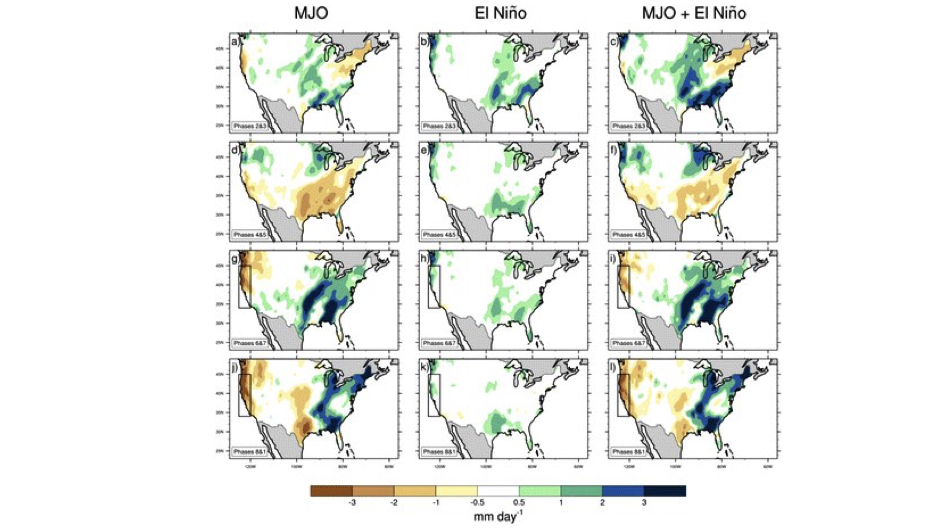MIAMI—Researchers at the University of Miami (UM) Rosenstiel School of Marine and Atmospheric Science have uncovered a new connection between tropical weather events and U.S. rainfall during El Niño years. The results can help explain why California received significantly less rainfall than predicted during the 2015 El Niño event while massive flooding occurred in the Mississippi River basin.
UM Rosenstiel School graduate student Marybeth Arcodia analyzed 39-years of weather data from the National Centers for Environmental Prediction–National Center for Atmospheric Research Reanalysis Project to understand how the Madden-Julian Oscillation (MJO), a phenomenon of sub-seasonal atmospheric variability in the tropical Indo-Pacific Oceans, leads to pressure and rainfall anomalies over the North Pacific and North America.
Results from the study show that when both an El Niño Southern Oscillation (ENSO) and MJO event are occurring simultaneously, the rainfall pattern typically seen from ENSO can be considerably altered for a few days to weeks due to interference from the MJO.
The researchers found that ENSO modifies the teleconnection signals associated with the Madden-Julian Oscillation in the United States. While at the same time, the El Niño Southern Oscillation acts to interfere with the MJO signals, resulting in significantly enhanced or masked rainfall anomalies in the U.S.
“Although the source of changes in rainfall patterns is coming from thousands of miles away in the tropical Indian and Pacific oceans, our study shows just how connected the tropics and the United States can be,” said Arcodia, the study’s lead author and UM Rosenstiel School Ph.D student. “If we have a better grasp on how the climate system works and how different aspects of our atmosphere work together, we can have more confidence in our weather and climate forecasts.”
The results from this study offer potential to help better understand Earth’s weather and climate system.
The study, titled “How MJO Teleconnections and ENSO Interference Impacts U.S. Precipitation” was published March 23 in the Journal of Climate. The work was supported through NOAA Grants (NA15OAR4320064, NA16OAR4310141, and N16OAR4310149) and a DOE Grant (DE-SC0019433). The coauthors of the study include Marybeth Arcodia, Ben Kirtman and Leo S. P. Siqueira from the UM Rosenstiel School of Marine and Atmospheric Science.

